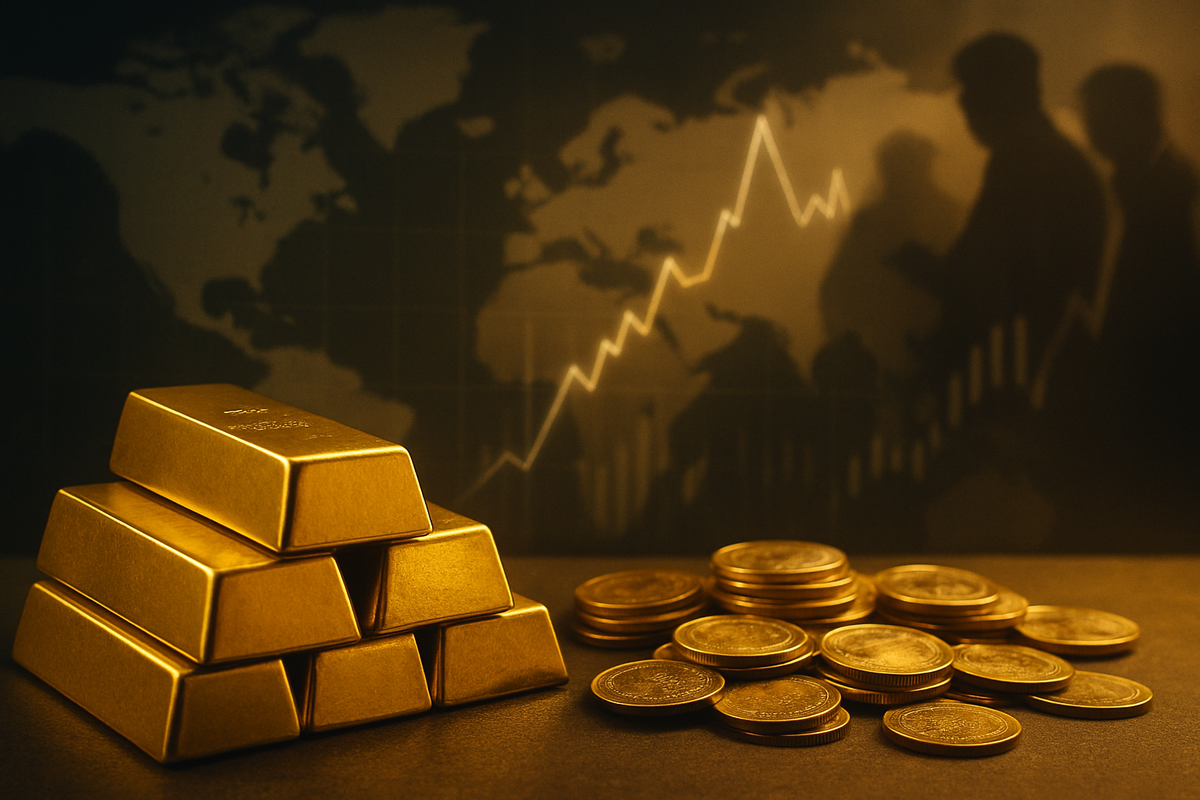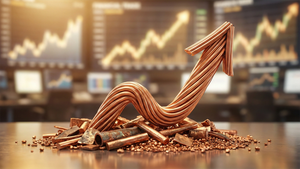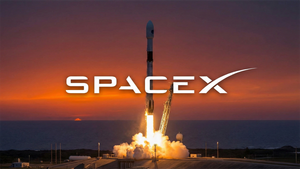
In an era defined by geopolitical turmoil and economic uncertainty, gold has once again asserted its timeless role as the ultimate safe-haven asset, surging to unprecedented record highs. As of October 2025, spot gold prices have soared past the $4,300 per ounce mark, with some instances touching $4,380.89. This remarkable rally represents an increase of nearly 60-70% since the beginning of 2025 and more than double its value since late 2023, signaling a profound shift in global financial sentiment.
This dramatic ascent is not merely a speculative bubble but a reflection of deep-seated anxieties permeating the global economy. Investors, from individual retail buyers to sovereign central banks, are increasingly seeking refuge in the yellow metal amidst a landscape fraught with persistent inflation, escalating geopolitical conflicts, and a strategic de-dollarization trend. The implications of this surge are far-reaching, impacting everything from national reserves to corporate balance sheets and the everyday cost of consumer goods.
The Unstoppable Ascent: A Detailed Look at Gold's Record Rally
Gold's journey to these record highs has been a relentless climb, characterized by rapid price increases fueled by a series of interconnected global events. The rally truly gained momentum in late 2023, breaking out to new highs around $2,135 per ounce after years of trading in a narrower range. By September 2024, prices had surged past $2,685 per ounce, driven by increased demand from China and lingering inflation concerns. The psychological $3,500 per ounce barrier was breached in April 2025, as investors shed riskier assets amid renewed trade tensions between the U.S. and China.
The momentum accelerated into October 2025, with gold topping the $4,000 per ounce milestone on October 7, a move that took just 36 days from $3,500/oz. Days later, on October 13, bullion crossed $4,100 per ounce internationally, with New York spot gold closing at a record $4,326 per troy ounce on October 17. By October 20, 2025, gold had risen to $4,349.51 USD/t.oz, up 2.34% from the previous day, marking a 16.07% rise over the past month and a staggering 59.83% increase compared to the same time last year. Overall, gold futures were up nearly 60% since the start of 2025, rising from around $2,670 at the beginning of January to about $4,268 per troy ounce by mid-October, and nearly 100% since the current rally began in early 2024.
This unprecedented rally has been shaped by several key players and global events. Central banks, particularly those in emerging markets like China, India, Turkey, Poland, and Singapore, have been aggressive net buyers, accumulating over 1,000 tonnes annually in 2023 and a record 1,180 tonnes in 2024. This strategic buying is motivated by a desire to diversify reserves away from the U.S. dollar and hedge against potential financial sanctions. Major investment firms, including Goldman Sachs, Bank of America, and UBS, have consistently revised their price forecasts upward, with some predicting gold could reach $5,000 per ounce by 2026. Retail investors have also joined the fray, pouring funds into gold-backed Exchange-Traded Funds (ETFs), which saw inflows topping $26 billion in the September 2025 quarter alone. Geopolitical actors, including the US (with its trade policies, government shutdown anxieties, and swelling national debt), China (trade tensions and insatiable gold demand), Russia (Ukraine war), and the Middle East (ongoing conflicts), have collectively created an environment of pervasive uncertainty that has served as a powerful catalyst for gold's ascent.
Corporate Fortunes: Winners and Losers in the Gold Rush
The historic surge in gold prices has created a stark divergence in fortunes across various public companies, enriching some while posing significant challenges for others.
The Winners: At the forefront of the beneficiaries are gold mining companies. Higher gold prices directly translate into increased revenue and expanded profit margins, allowing them to reinvest in exploration, reduce debt, or return capital to shareholders. Companies like Newmont Corporation (NYSE: NEM), the world's largest gold miner, Barrick Gold Corporation (NYSE: GOLD), known for its large-scale, cost-efficient operations, and Agnico Eagle Mines Limited (NYSE: AEM), with its consistent production from low-cost mines, are all poised for significantly improved earnings and stock performance. Alamos Gold (NYSE: AGI), a Canadian producer, has also demonstrated significant operating leverage, seeing revenues and adjusted net earnings outpace production growth. Gold streaming and royalty companies, such as Franco-Nevada, also thrive. These firms provide upfront financing to miners in exchange for future gold production at a fixed, lower price or a percentage of future revenue. They benefit from rising gold prices without the direct operational risks and costs of mining, often leading to superior profit margins and stock performance compared to traditional miners. In regions like India, Gold Loan Non-Banking Financial Companies (NBFCs) like Muthoot Finance and Manappuram Finance are experiencing a boom. The increased value of gold collateral boosts their assets under management (AUMs), improves loan-to-value (LTV) ratios, and enhances overall profitability, as they can offer larger loans against the same quantity of gold.
The Losers: Conversely, industries that rely on gold as an input material face significant headwinds. Jewelry companies are grappling with soaring input costs, which directly impact consumer affordability and demand. Retailers are forced to either raise prices, potentially losing sales volume, or absorb costs by narrowing already thin margins. Major Chinese jewelers like Chow Tai Fook Jewellery Group and Laopu Gold have already announced significant price hikes. Brands like Mejuri and Melanie Auld in Canada have similarly adjusted prices or shifted focus to alternative materials. Electronics manufacturers also face challenges. Gold's superior conductivity and corrosion resistance make it indispensable in semiconductors, printed circuit boards (PCBs), connectors, and high-end devices. A rise in gold prices directly increases the bill of materials for these manufacturers, eroding profit margins if they cannot pass on costs. While specific public electronics companies weren't singled out as "losers," the entire semiconductor industry and manufacturers of high-end components are exposed to these rising costs, potentially leading to price hikes in consumer electronics and industrial equipment. Other industries such as dentistry, medical devices, and automotive (for sensors and safety systems) also use gold, and while quantities might be smaller, the surge still contributes to increased production expenses.
A New Global Order: Gold's Wider Significance
Gold's record rally transcends mere market fluctuations; it is a powerful indicator of profound shifts occurring within the global economic and geopolitical landscape.
The most significant trend underpinning this rally is the accelerating de-dollarization. Following events like the freezing of Russian foreign assets, central banks, particularly in emerging markets, are actively diversifying their reserves away from the U.S. dollar, with gold emerging as the preferred alternative. This structural demand provides a robust floor for gold prices and signals a long-term strategic shift in global monetary preferences, with central banks now holding more gold than US Treasuries for the first time since 1996. Furthermore, gold is firmly reasserting its role as a hedge against persistent inflation. With core inflation remaining stubbornly high globally and unprecedented monetary expansion contributing to lasting inflationary pressures, investors are turning to gold to preserve purchasing power. Gold prices have significantly outpaced the U.S. Consumer Price Index's rise since 2019, demonstrating its efficacy. The backdrop of heightened geopolitical instability, including ongoing conflicts in Ukraine and the Middle East, along with U.S.-China trade frictions, consistently fuels gold's safe-haven appeal, making it a preferred asset during times of global stress.
The ripple effects of this gold surge are widespread. Silver is experiencing a parallel rally, driven by both industrial demand and investor interest in tangible assets. While gold and equities have traditionally moved independently, they have recently shown an unusual positive correlation, with both rising significantly since late 2022, possibly reflecting investor concerns about an "AI bubble" in stocks alongside inflation hedging. The appeal of non-yielding gold is also enhanced by low or declining real interest rates, making it more attractive compared to bonds. A weakening U.S. dollar further boosts gold's appeal for international investors.
In terms of regulatory and policy implications, the sustained rally, fueled by concerns over national debt and monetary expansion, could pressure governments to re-evaluate fiscal and monetary strategies, potentially leading to calls for more disciplined spending. Countries with high gold demand, like India, may consider tariffs to protect their currency, while the high prices could also incentivize smuggling, prompting governments to reconsider import duties. Historically, gold has seen similar surges during periods of high inflation and geopolitical turmoil, such as the 1970s rally (post-Bretton Woods, oil crisis, Vietnam War) and the 2000s rally (post-9/11, Great Recession, quantitative easing). The current rally, however, is unique due to the unprecedented scale of central bank buying and global liquidity expansion, suggesting a more fundamental and structural shift rather than a temporary speculative wave.
The Road Ahead: Navigating Gold's Future Landscape
The future outlook for gold prices appears overwhelmingly bullish, both in the short and long term, necessitating strategic pivots for businesses and investors.
In the short-term (next 6-12 months), major financial institutions project gold to average around $3,675 per ounce by Q4 2025, with prices climbing towards $4,000-$5,000 per ounce by early to mid-2026. This optimism is driven by persistent geopolitical uncertainty, accommodating monetary policies (expected Fed rate cuts), lingering inflation concerns, and robust central bank and institutional demand. For the long-term (beyond 12 months), many analysts project gold to exceed $5,000 per ounce by 2026, with some forecasts suggesting targets of $5,150-$5,800 by 2030, and even aggressive scenarios hinting at $7,000 by 2025 or $10,000 by 2030 under extreme conditions. These long-term projections are underpinned by continued central bank accumulation, the accelerating de-dollarization trend, persistent economic and policy uncertainty, and inflationary pressures.
For investors, strategic adaptations include maintaining a diversified portfolio with a judicious allocation to precious metals (some recommending 10-20% for optimal risk-adjusted returns), employing dollar-cost averaging to mitigate volatility, and considering a balanced exposure across physical gold, gold-backed ETFs, and gold mining stocks. A long-term perspective and robust risk management strategies are crucial. Gold mining companies must focus on operational efficiency, disciplined capital stewardship, and embrace sustainability (ESG) practices to attract investors. Technological adoption in mining will also be key to enhancing efficiency and reducing costs.
Market opportunities include continued strong demand from various segments, growth in emerging markets, and diversification into gold-related assets. Challenges, however, include short-term volatility and potential corrections, the possibility of geopolitical de-escalation, a strong global economic recovery that could reduce gold's safe-haven appeal, and competition for investment capital from other asset classes. Potential scenarios range from a continued bull market (high probability) where gold consistently trades above current levels and solidifies its role as a strategic hedge, to a correction and consolidation phase (moderate probability) offering new entry points, and a less likely bearish reversal if global conflicts rapidly resolve and traditional assets soar.
The Golden Future: A Market Redefined
Gold's record-breaking rally in 2025 is a testament to its enduring significance as a fundamental asset in the global economy, driven by a complex interplay of uncertainty, strategic diversification, and evolving monetary policy. The key takeaways from this period are clear: gold has firmly re-established its status as the premier safe-haven asset, a critical tool for portfolio diversification, and a potent hedge against inflation and currency debasement.
Moving forward, the market is poised for a sustained bullish trend, with major financial institutions forecasting continued appreciation. This rally signals a potential structural shift in the global financial system, as central banks reduce reliance on the U.S. dollar and investors seek refuge from systemic risks. The lasting impact will likely be a recalibration of investor trust in traditional instruments and a heightened appreciation for tangible assets.
Investors should closely watch several key indicators in the coming months: the Federal Reserve's monetary policy decisions (especially interest rate adjustments), ongoing geopolitical developments, inflation data and real interest rates, central bank gold purchasing activity, the strength of the U.S. dollar, and broader global economic stability. While short-term volatility remains a possibility, the overarching outlook suggests that gold's golden age is far from over, reinforcing its pivotal role in navigating an increasingly unpredictable world.
This content is intended for informational purposes only and is not financial advice






